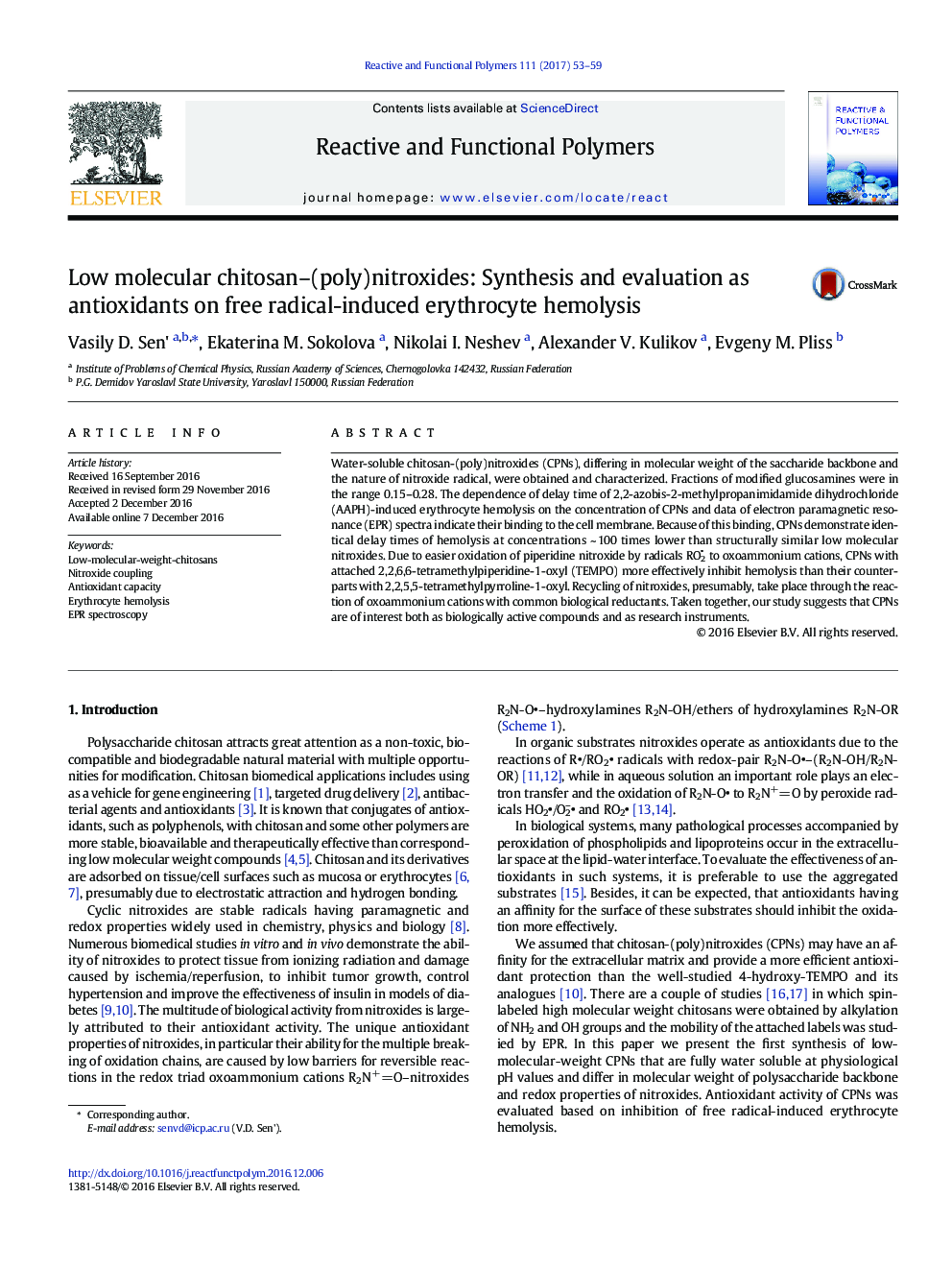| Article ID | Journal | Published Year | Pages | File Type |
|---|---|---|---|---|
| 5209274 | Reactive and Functional Polymers | 2017 | 7 Pages |
Water-soluble chitosan-(poly)nitroxides (CPNs), differing in molecular weight of the saccharide backbone and the nature of nitroxide radical, were obtained and characterized. Fractions of modified glucosamines were in the range 0.15-0.28. The dependence of delay time of 2,2-azobis-2-methylpropanimidamide dihydrochloride (AAPH)-induced erythrocyte hemolysis on the concentration of CPNs and data of electron paramagnetic resonance (EPR) spectra indicate their binding to the cell membrane. Because of this binding, CPNs demonstrate identical delay times of hemolysis at concentrations ~Â 100 times lower than structurally similar low molecular nitroxides. Due to easier oxidation of piperidine nitroxide by radicals RO2 to oxoammonium cations, CPNs with attached 2,2,6,6-tetramethylpiperidine-1-oxyl (TEMPO) more effectively inhibit hemolysis than their counterparts with 2,2,5,5-tetramethylpyrroline-1-oxyl. Recycling of nitroxides, presumably, take place through the reaction of oxoammonium cations with common biological reductants. Taken together, our study suggests that CPNs are of interest both as biologically active compounds and as research instruments.
